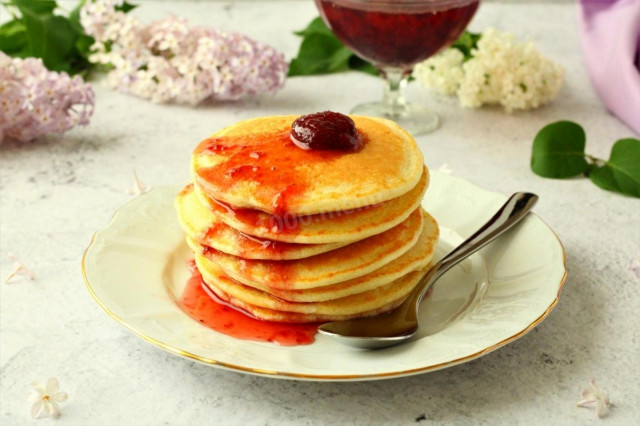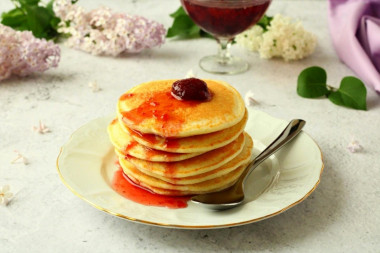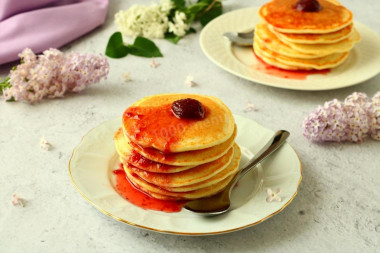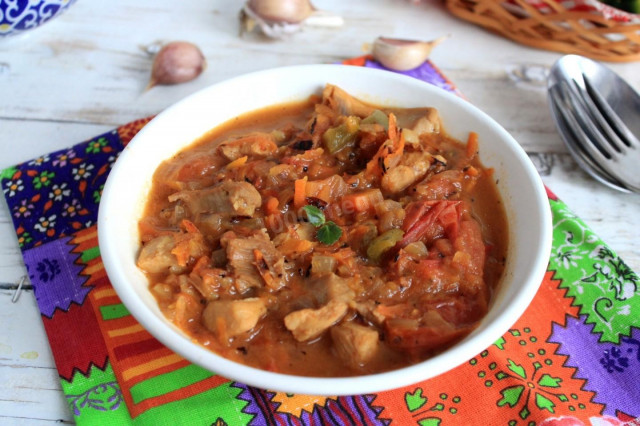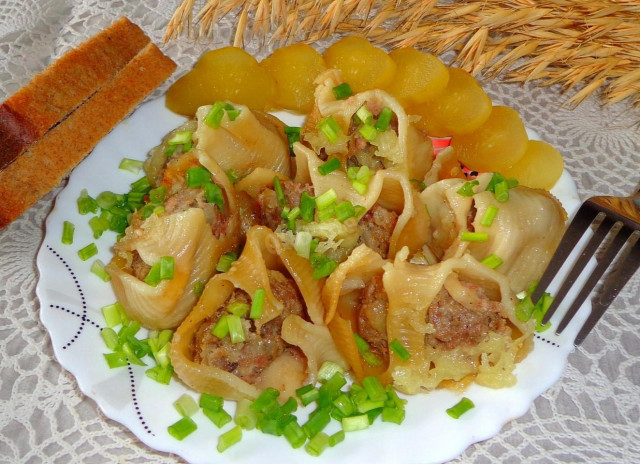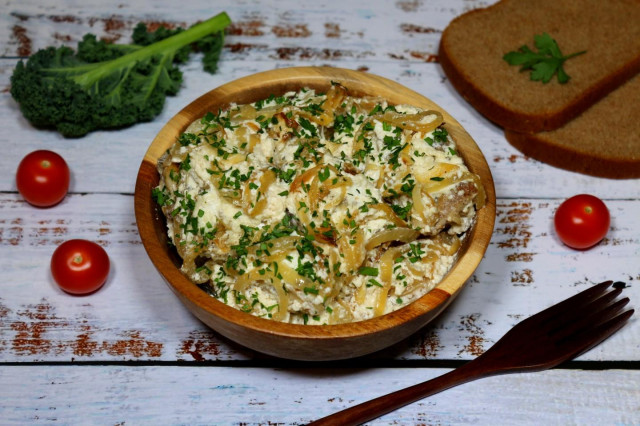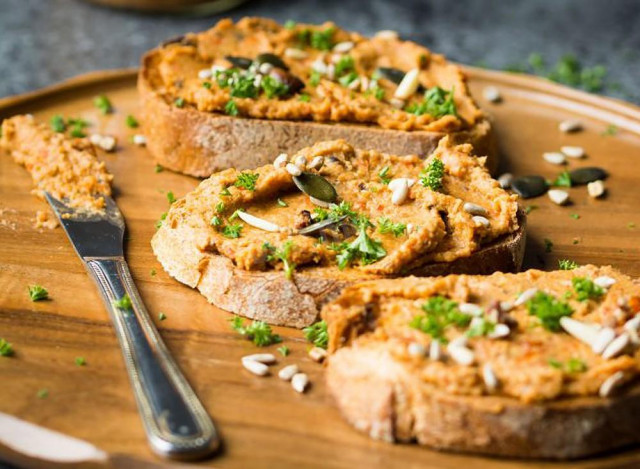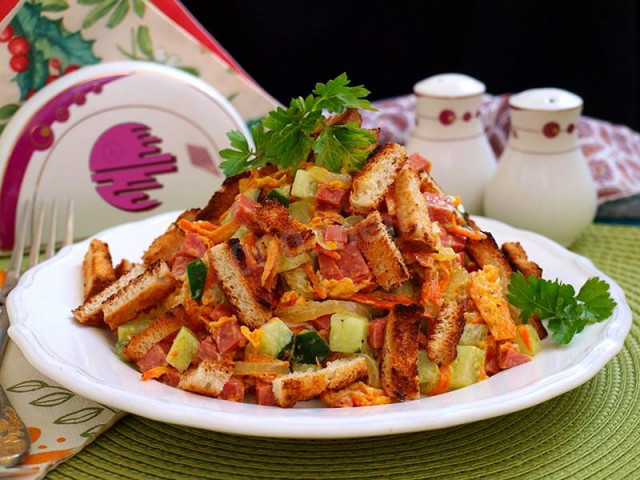Composition / ingredients
Step-by-step cooking
Step 1:
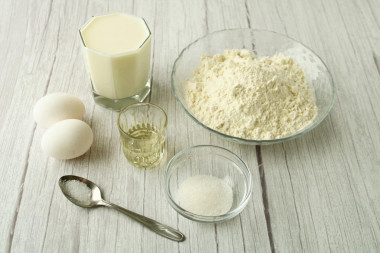
Prepare the necessary ingredients for making pancakes without baking soda and baking powder. Do this in advance so that the products are at room temperature. Take odorless vegetable oil. Use flour of the highest grade.
Step 2:
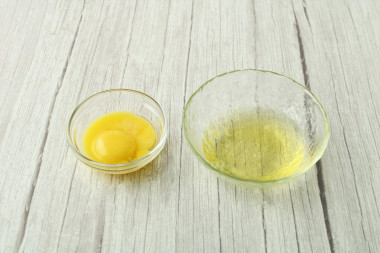
Divide the eggs into yolks and whites. Do this very carefully so that not a drop of yolk gets into the whites, otherwise you will not be able to beat the whites correctly.
Step 3:

Sift the flour well through a fine sieve. This will enrich the flour with oxygen, and the dough will turn out more lush.
Step 4:
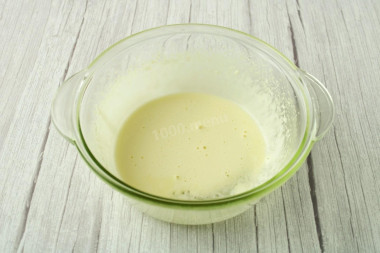
With a mixer, beat the yolks with sugar to a light dense mass.
Step 5:

Heat the milk slightly, pour it into the beaten yolks.
Step 6:
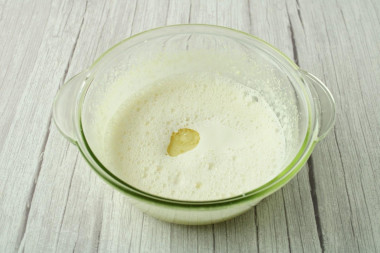
Lightly whisk everything to a froth. Add vegetable oil, mix.
Step 7:
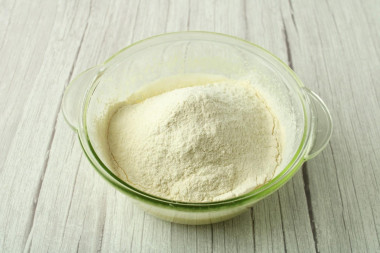
Pour in the sifted flour, you can do it again through a sieve.
Step 8:

Mix the flour into the dough first with a spoon, then beat with a mixer until the lumps of flour disappear. The dough should be homogeneous, fluid.
Step 9:
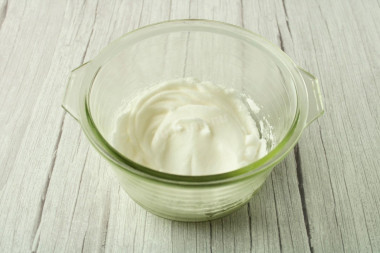
Rinse the beaters of the mixer well, dry thoroughly. In a deep enough container, whisk the whites. First, beat at low speeds until soft peaks, then gradually increase the speed. In the process of whipping, add salt to the proteins, this will make the protein foam more stable. Whisk the whites to dense, firm peaks. Properly whipped whites in an inverted container should be stationary.
Step 10:

Put the proteins in the dough. With a spatula, gently mix the proteins into the dough with movements from top to bottom so as not to disrupt their air structure.
Step 11:

The dough turns out to be lush, similar to a sponge cake. After cooking, bake the dough immediately so that the proteins do not have time to settle and the dough does not lose its splendor.
Step 12:
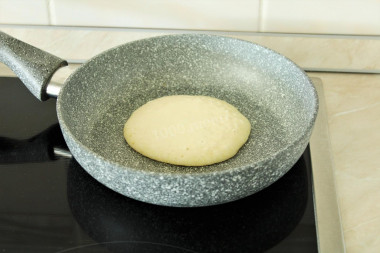
To bake pancakes, use a frying pan with a non-stick coating and a thick smooth bottom. Pancakes are cooked in a dry frying pan. Pour the dough into a preheated frying pan, forming a round pancake. Bake the pancake over moderate heat. When bubbles appear on the surface, it means that the pancake is baked from below and it can be turned over.
Step 13:

Turn the pancake over and bake on the other side until browned. If the size of the pan allows, you can bake several pancakes at the same time, which will speed up the process. Pancakes are baked quickly, about one minute on each side.
Step 14:
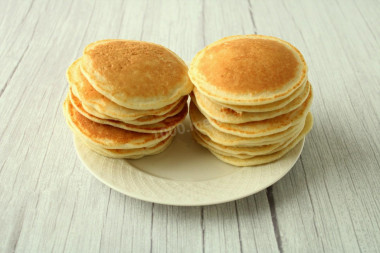
Put ready-made pancakes on a plate with a slide.
Step 15:
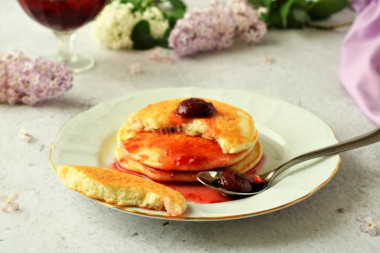
Serve pancakes with any sweet sauces, jam, condensed milk. Bon appetit!
You can also serve pancakes with sour cream, any syrup, add berries, soft fruits, nuts.
The pancakes turned out to be surprisingly lush and porous inside. The main thing is to beat the proteins correctly so that the dough is airy, then the pancakes will be successful without the addition of loosening additives.
Be prepared for the fact that flour may need more or less than indicated in the recipe. Focus not on the amount of flour, but on the desired consistency of the dough. Read a lot of useful information about flour and its properties in this article!
The calorie content of the products possible in the composition of the dish
- Whole cow's milk - 68 kcal/100g
- Milk 3.5% fat content - 64 kcal/100g
- Milk 3.2% fat content - 60 kcal/100g
- Milk 1.5% fat content - 47 kcal/100g
- Concentrated milk 7.5% fat content - 140 kcal/100g
- Milk 2.5% fat content - 54 kcal/100g
- Chicken egg - 157 kcal/100g
- Egg white - 45 kcal/100g
- Egg powder - 542 kcal/100g
- Egg yolk - 352 kcal/100g
- Ostrich egg - 118 kcal/100g
- Granulated sugar - 398 kcal/100g
- Sugar - 398 kcal/100g
- Vegetable oil - 873 kcal/100g
- Salt - 0 kcal/100g
- Wheat flour - 325 kcal/100g

